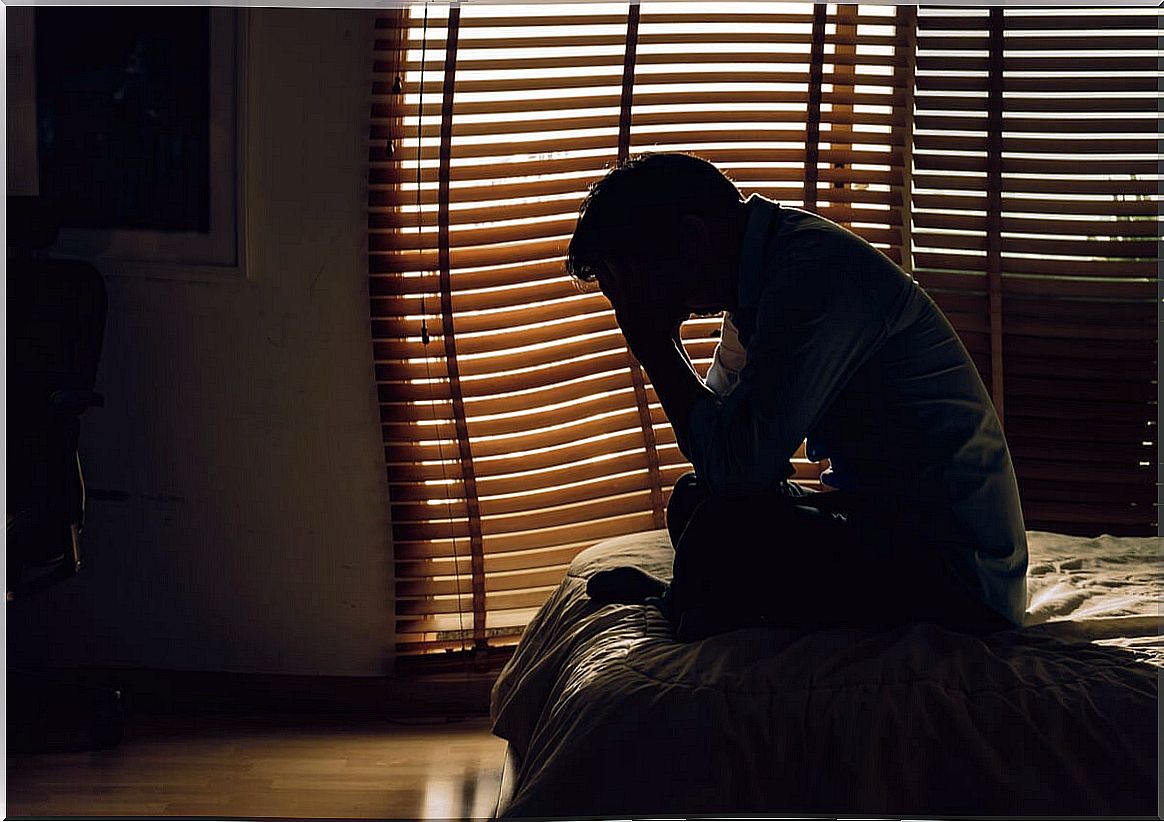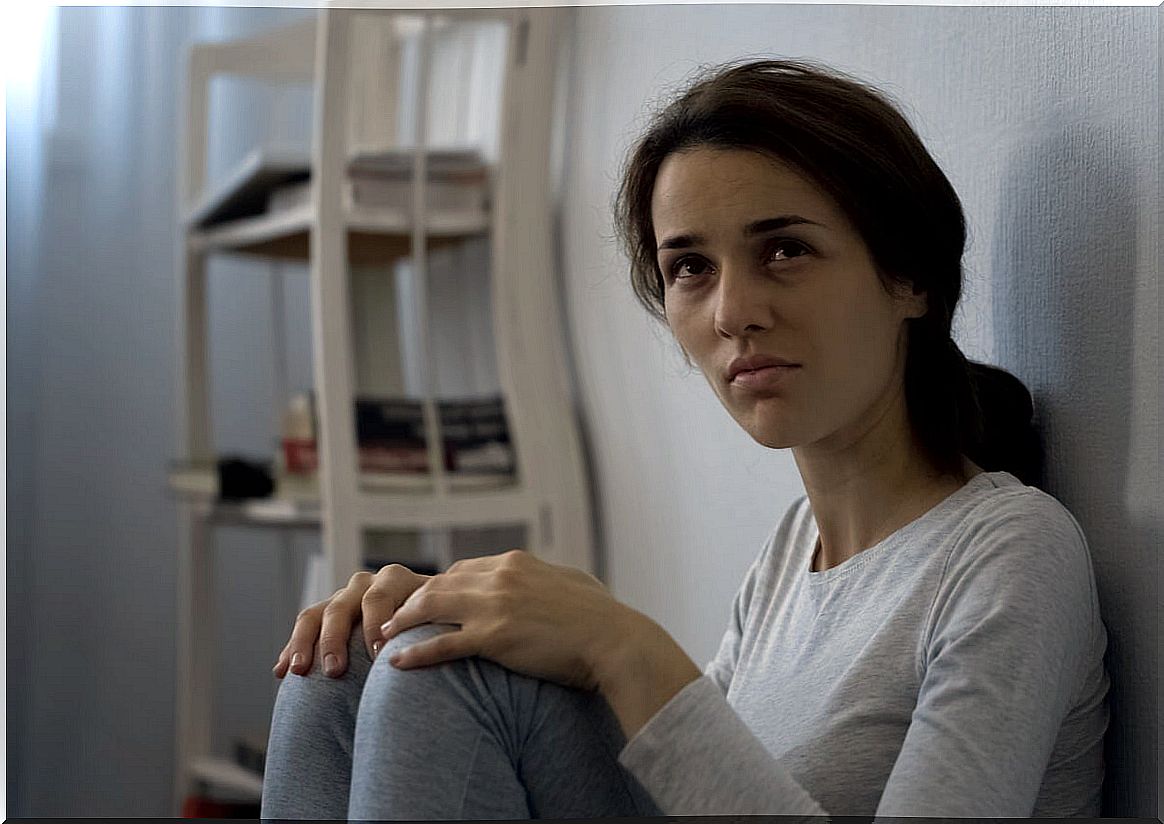Simple Schizophrenia: What Is It?

Simple schizophrenia is a subtype of schizophrenia introduced by the Swiss psychiatrist Eugen Bleuler. It is a diagnosis not without controversy; the debate remains open as to whether or not to include it as such in the different reference manuals (DSM, CIE …). Currently, simple schizophrenia only exists as a diagnostic category in the ICD-10 (International Classification of Diseases), but not in the DSM-5 (Diagnostic Manual of Mental Disorders).
Schizophrenia, as such, according to the DSM-5, has a lifetime prevalence of between 0.7 and 1.5%. In the previous edition (DSM-IV-TR), its prevalence was 1%. However, it should be noted that simple schizophrenia has very particular characteristics that separate it from “classic” schizophrenia; basically, it is a schizophrenia where there are only negative symptoms (there has never been a psychotic episode).
It must last at least 1 year to be diagnosed and your prognosis is poor. But what else do we know about this subtype of schizophrenia? How is it different from other subtypes of schizophrenia? We will see it throughout the article.

Schizophrenia and simple schizophrenia: symptoms
Before delving into the symptoms of these disorders, some previous data: the
But what are the symptoms of simple schizophrenia? Before we see them, let’s look at the symptoms of “classic” schizophrenia. These can be divided into three large groups:
Positive symptoms
They are characterized by the appearance or exacerbation of some psychological function. For example: hallucinations, disorganized language and behavior, and delusions.
Negative symptoms
Characterized by the absence or reduction of some psychological function. For example: apathy, decreased fluency and thinking, apathy, decreased speech, etc.
Cognitive symptoms
The cognitive symptoms of schizophrenia are characterized by the impairment of the person’s cognitive processes. For example, attention or memory.
Symptoms in simple schizophrenia
In the case of simple schizophrenia, it differs from “classic” schizophrenia in that it only presents negative symptoms, but not cognitive or positive. Specifically, what symptoms characterize simple schizophrenia?
The first symptom is extravagant behavior, which appears in a progressive and insidious way. Another symptom is the decrease in the general performance of the subject in his daily life, in addition to an inability to satisfy social demands.
As a defining feature of simple schizophrenia, it should be noted that there is no evidence, at any time, of the presence of hallucinations or delusions (symptoms that would be present in “classic” schizophrenia, as part of the positive symptoms already mentioned). That is, the symptoms of simple schizophrenia are only negative symptoms.
In this sense, there has never been a psychotic episode (this is the difference with another subtype of schizophrenia, residual schizophrenia, which is characterized by the fact that the subject has had a psychotic episode in the past, although currently only has negative symptoms).
Alterations in daily life
As in any other mental disorder, the symptoms of simple schizophrenia involve alterations in the person’s daily life, which is interrupted. Thus, on the one hand, social relationships are strongly affected, in addition to academic and / or work performance.
Other symptoms
Other symptoms that can appear in simple schizophrenia are: fleeting episodes of self-referential delirium, depressed mood and social isolation.
Simple schizophrenia: the worst diagnosis
Among the different subtypes of schizophrenia existing in the DSM-IV-TR (in the DSM-5 the subtypes are eliminated), we find: paranoid, hebephrenic or disorganized schizophrenia, catatonic, undifferentiated and residual. Well, simple schizophrenia is the one that has a worse prognosis of all the subtypes of schizophrenia, together with Heberenic or disorganized schizophrenia, which also has a poor prognosis.
This poor prognosis is especially related to the predominant negative symptoms in simple schizophrenia. These, generally, in psychotic disorders, are those that interfere especially in the life of the person. However, like all mental disorders, this can also be treated from psychology and psychiatry (and even from other disciplines). What does your treatment consist of?

Treatment
The ideal treatment in cases of simple schizophrenia will be one that involves a multidisciplinary approach, where psychiatrists, clinical psychologists and other professionals can make their contributions. The basic symptoms that interfere with the patient’s life should be treated, through psychotherapy and the use of drugs if required (anxiolytics, antidepressants, etc.).
On the other hand, it will be important to work with the patient on their level of insight and their awareness of the disease. In addition, it will seek to enhance their resources and their coping strategies to face their difficulties.
Finally, the therapeutic alliance will also be an essential element to work with the patient so that he adheres to the treatment in an adequate way (both psychological and pharmacological treatment).









